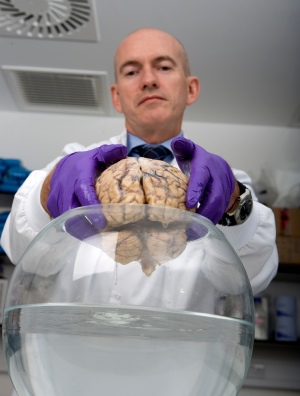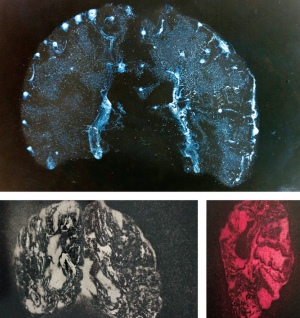Neuroscience and art collide in new Imperial exhibition

Imperial neuroscientist Professor David Dexter talks about his work with artist Susan Aldworth for Transcience - an exhibition at the Blyth Gallery.
David Dexter works with brains and understands all too well the visceral effect this crucial organ can have on members of the public.
“We used to do outreach at the Science Museum with children, and it’s probably at about 11 or 12 years that they develop this ‘eew’ factor about the brain that stays with them through to adulthood,” David says.

'It’s trying to get over that mystery about the brain; that it is a beautiful structure in itself and a fascinating object,' - Prof David Dexter
Stemming from a desire to promote discussion, and from his own love of art, David joined the GV Art Gallery group called the Arts and Minds Movement. Several artists expressed a desire to see a brain dissection, and from that a series of neural-inspired artistic endeavours were launched.
The works featured in Transience were created by Susan Aldworth, using both traditional etching techniques and digital photography. The former involved contacting brain slices directly with zinc plates, which were then put into acid baths to form etchings of each organ’s unique architecture.

Transcience
After the pieces were made, David returned the specimens to the tissue bank, where they continued their role in medical research. Before being displayed at Blyth Gallery, the pieces were shown at GV Art with David fielding a Q&A session. “They’d come along to see the artwork primarily, but they were starting to ask about the tissue, who donates it, the donation procedure and if it’s something anyone can do. It does work at bridging the gap between the art and the science”.
Transience is open until 1 May 2014. Prints are for sale, and a portion of the proceedings go towards Parkinson’s Disease research.
Article text (excluding photos or graphics) © Imperial College London.
Photos and graphics subject to third party copyright used with permission or © Imperial College London.
Reporter
Press Office
Communications and Public Affairs
- Email: press.office@imperial.ac.uk
